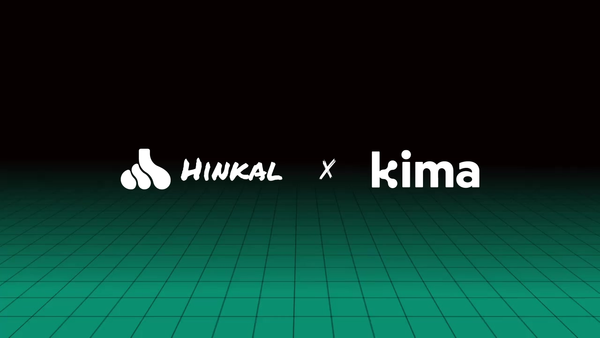Privacy for Managed Accounts & LPs: Hinkal Private Accounts

Introduction
After the collapse of FTX, billions of dollars were moved to DeFi. Managed accounts AUM increased rapidly, with investors seeking professional handling of their funds. Contrary to CEX accounts, non-custodial solutions give direct control and exposure of underlying assets. SMAs became the go-to solution for most investors.
Until recently, multi-sig wallets were the best available solution for managed accounts. Investors kept custody of their assets, while managers had the required permissions to execute strategies on the investors’ behalf. However, this solution is not optimal for liquid funds and asset managers, as it leaves them vulnerable to two cases of strategy copying - from their clients and other on-chain market participants.
Traditionally, the expertise in investment strategies and trading was met with a commission. Investors seeking professional management of their funds provided the capital, while asset managers achieved the investment returns, for a fee. For crypto investments, this is commonly facilitated with multi-sig wallets.
But here’s the catch: All transactions are visible to investors. This means that investors can copy strategies executed by managers of their accounts and achieve same results without compensation. How can they do that? They provide the minimum capital required to set up a managed account, meaning only a portion of their funds. Then they can follow the same strategies of their managed account with the rest of their funds.
Since transactions are visible on-chain, the activity of large capital owners is frequently tracked. Their strategies are copied, cutting profits. Transactions can be targeted for MEV attacks. To remedy that, transferring funds between wallets or using multiple wallets is needed. However, this can be inefficient in terms of cost and time, cumbersome, and has some limitations.
For this to work, CEX counterparts need to be involved, in depositing funds from one wallet and withdrawing them to a new one. But CEX addresses are also monitored, which limits the withdrawals to small increments, to stay under the radar. More importantly, this method cannot always work, as illiquid or newly unvested tokens are not always listed. In the meantime, gas fees turn this method into a costly solution of staying untraceable. Lastly, constantly having to sign transactions is not optimal for a streamlined execution of strategies. It is inconvenient, time-consuming, and can affect the correct timing of transactions while trading.
Taking the above hurdles mentioned as a necessary evil of DeFi is faulty reasoning. To counter this, a protocol needs to provide asset managers with three simple solutions.
- A private environment for all transactions and assets.
- A way to provide assets for management easily.
- The ability to share needed information about the output of used strategies.
Hinkal is that protocol. Let’s see how it achieves it.
Private environment
Hinkal provides on-chain confidentiality. All assets are deposited into the self-custodial private addresses, inside the smart contract. What appears on-chain, for all transactions, is Hinkal smart contract with no visibility of private addresses. A good analogy for this is custodians or CEXs - you have your wallet but, in fact, many other users use the same wallet. In Hinkal many users have private addresses but only smart contract is visible on-chain. At the same time, only owners of the private account have visibility over the account’s balance, transaction history, and token allocation. This achieves two goals:
- Capital providers invest in asset manager skills, making know-how inimitable and secure. Investors provide the capital but have no visibility over the transactions executed. Liquid funds and asset managers provide the expertise with no fear of their strategies getting copied by their clients.
- Strategies and assets are guarded against copy-traders, MEV attacks, and hacks. The relayers execute every transaction on the users’ behalf, while users’ funds are kept on private addresses inside Hinkal. As a result, there is no way to track a large capital holder’s activity or token holdings.
Major dApps are integrated under one simple UI to allow seamless execution of yield farming strategies and liquidations. Liquidity from Odos, Uniswap, and 1Inch is aggregated, providing the best possible swap pair quotes. Curve pools are integrated for liquidity provision, while Convex, Beefy, and Lido can be accessed for staking.
Direct Deposit to Managed Accounts
Users can send funds directly to managed accounts from their public wallets. Assets deposited into Hinkal can only be viewed and spent by the owner of the private address. At no point during smart contract interactions do they lose custody. At the same time, there is no need to sign any transaction, making the experience smoother and less time-consuming. The process looks like this:
- The manager of the private account copies and sends the account’s Recipient and sends it to the investor.
- The investor can enter this information to deposit funds directly into the managed account using their public wallet or the managed multi-sig wallet.
Detailed Statistics
The Statistics dashboard provides comprehensive information about token allocation and transactions. Divided into two tabs, it gives a complete overview for:
- Total assets managed, a breakdown in tokens and percentages.
- Allocation of assets in pools and staking protocols.
- Complete transaction history
Asset managers don’t need to give account access to clients. Instead, they can provide a detailed picture of their strategy output by extracting the transaction history and asset data using the Statistics page. Meanwhile, it offers insights into transactions, allocations, and balances, giving managers tools for better tracking of assets.
Security focus
Security is a top priority for Hinkal. To ensure users’ funds are safe the following measures have been taken:
- Excessive auditing of smart contracts by Quanstamp, Secure3, Zokyo and inspection by white hacker for exploits.
- Bug bounty with Immunefi, to ensure no weaknesses are omited
- Real-time threat detection and wallet screening by Hexagate.
- AML/KYC (B) layer to prevent illicit parties from using the protocol.
- Option of password-protected mode as an extra layer of account security.
Conclusion
Hinkal redefines DeFi for managed accounts, providing on-chain privacy. Streamlined direct deposits and detailed statistics optimize account management. The integrated dApps complete the stack, giving asset managers and LPs a comprehensive solution for their on-chain strategies. All under a single UI. Hinkal caters to the needs of asset managers and liquid funds - while the needs grow, so will Hinkal.




